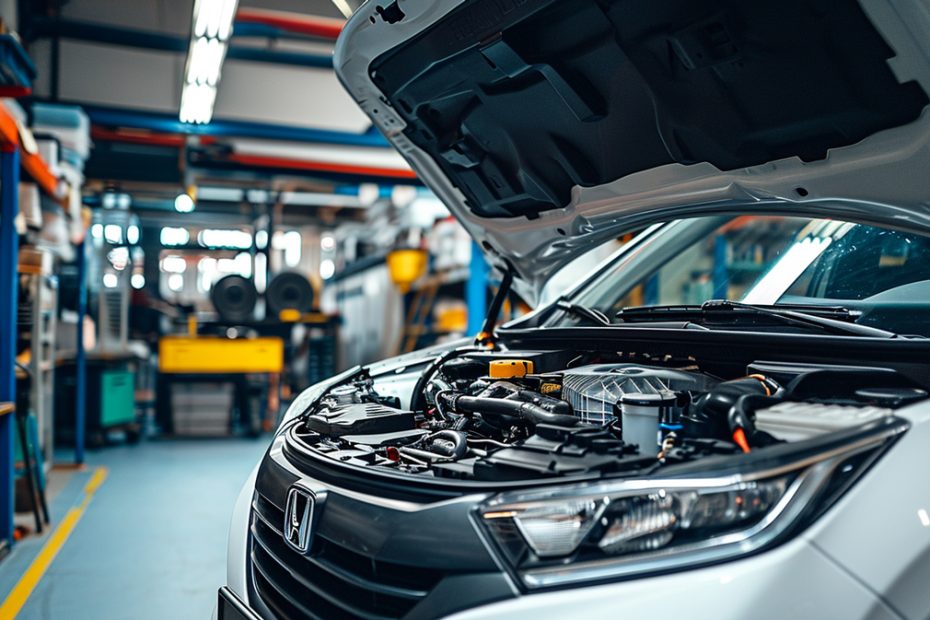We’ve all experienced that sinking feeling when we turn the key in our car’s ignition, and instead of roaring to life, the engine cranks slowly. It’s often a telltale sign of a low battery or starter issues, which can put a serious damper on our day.
Understanding the root cause of these problems can save us time and frustration. We’ll dive into the common culprits behind a sluggish start and how to pinpoint whether it’s the battery waving a white flag or the starter crying out for help.
Stay with us as we explore the symptoms, diagnostics, and solutions for when your vehicle’s engine just doesn’t seem to have the pep it used to. We’re here to get you back on the road with confidence and your engine starting smoothly, every time.
Symptoms of a Slow Cranking Engine
When we turn the key, or push the start button, we expect our car’s engine to roar to life promptly. However, when faced with a slow cranking engine, certain telltale signs pop up before the issue becomes a no-start situation. Recognizing these symptoms early can steer us toward the timely maintenance our vehicles need.
- Extended Cranking Time: The most obvious symptom is the engine taking longer than usual to start. It’s like a sluggish, labored, or drawn-out attempt to get moving.
- Dimming Lights: If the dashboard lights or headlights noticeably dim during startup, it’s a red flag pointing towards insufficient power.
- Clicking Sounds: A series of rapid clicking noises when trying to start the engine could be shouting out starter troubles.
- Intermittent Issues: Sometimes, the engine may crank fine on one occasion but sluggishly on another. This inconsistency suggests an intermittent problem that shouldn’t be ignored.
The pitch of the cranking engine can also serve as a clue. A healthy engine sounds robust and decisive, while a low battery or failing starter may cause a weak, wavering tone. It’s important to note that cold weather can exacerbate these symptoms, as batteries can lose up to 50% of their charge at freezing temperatures.
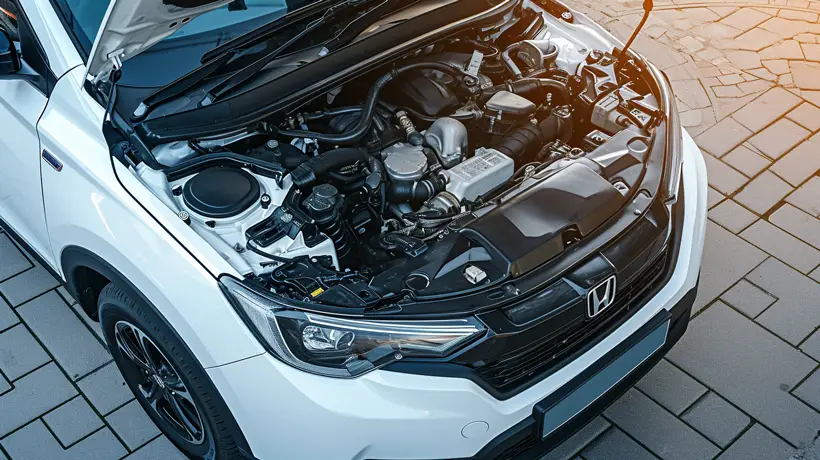
We must monitor the frequency and conditions under which these symptoms occur. It’s not just about a battery potentially lacking juice; it can also point to corroded connections or a deteriorating starter motor. For those of us looking to dive a bit deeper, a fading battery will generally have a voltage of less than 12.6 volts when measured with a multimeter.
If you’re picking up on any of these warning signs, it’s time for a closer look under the hood. Here’s a quick reference to remember:
| Symptom | Possible Cause |
|---|---|
| Extended Cranking Time | Low battery power or failing starter |
| Dimming Lights | Insufficient power supply |
| Clicking Sounds | Potential starter motor issue |
| Intermittent Starting | Battery or starter connection issues |
Let’s keep these symptoms in mind, so we can address issues before they escalate. Identifying the problem early means we can prevent being stranded with a car that won’t start.
Diagnosing a Low Battery
When we notice our engine cranking sluggishly, it’s crucial to begin with assessing the battery’s condition. A low battery is often the culprit behind starting troubles and diagnosing it should be our first step. We’ll run through the essential checks and tools needed to pinpoint the problem.
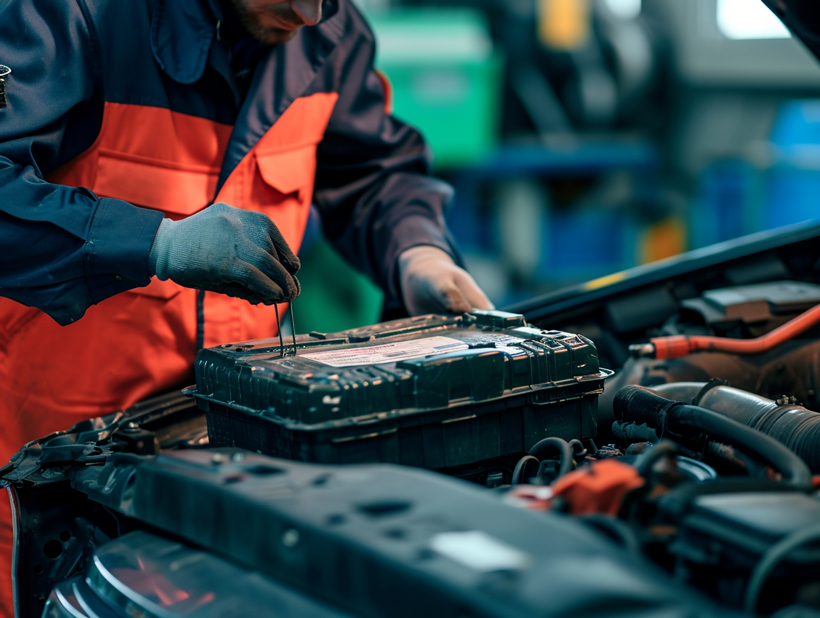
Start With a Visual Inspection
A detailed visual inspection can reveal obvious issues that may be causing battery troubles. Here’s what to look for:
- Corrosion on Battery Terminals: White or greenish buildup can impede the flow of electricity.
- Loose Connections: Ensure the battery terminals are tightly fastened.
- Visible Damage: Check for any cracks or leaks on the battery case.
Use Multimeter Testing
A multimeter allows us to measure the voltage levels of our battery to ascertain its health. A fully charged battery should read about 12.6 volts or above when the engine is off. We can follow these steps:
- Set the multimeter to the DC voltage setting.
- Place the red lead on the positive battery terminal and the black lead on the negative terminal.
- Read the multimeter display; a voltage under 12.2 volts typically indicates a low battery charge.
Conduct a Load Test
If the battery voltage appears normal, a load test can further determine its ability to hold a charge under operating conditions. Auto parts stores often offer free testing or we can use a handheld load tester. During this test, a battery in good condition should maintain a voltage close to 9.6 volts for 15 seconds at half the CCA rating.
Assess Charging System Health
Even with a good battery, a faulty charging system can lead to low charge levels:
- Alternator Issues: The alternator charges the battery; if it’s failing, the battery won’t charge properly.
- Belt and Pulley: A worn belt or faulty pulley can prevent the alternator from working efficiently.
By following these diagnostic steps, we can pinpoint whether a low battery is the source of our slow-cranking engine issues or if we should investigate other potential causes like starter motor problems. It’s essential to tackle these checks promptly, ensuring that we’re not caught off-guard by a car that refuses to start.
Checking the Starter
After addressing the battery’s condition, we must consider the starter motor as a possible culprit behind a slow-cranking engine. The starter is critical in engaging the engine, and if malfunctioning, it can lead to the symptoms we’re experiencing. Let’s delve into the steps to check the integrity of the starter.

Visual Inspection
Firstly, we should perform a visual check for any obvious signs of wear or damage. Look for:
- Disconnected or frayed wires
- Corroded connections
- Physical damage to the starter body
Testing Starter Function
To test the starter’s function, we’ll need a circuit tester or a multimeter. Here’s how we use it:
- Locate the starter solenoid and have someone attempt to start the vehicle while you observe the tester.
- A healthy starter should show a strong electrical current.
Symptoms of a Faulty Starter
When assessing starter health, keep an eye out for:
- Grinding noises during engine start
- Whirring sounds with no engine movement
- Freewheeling where the starter fails to engage the engine
Solenoid Voltage Drop Test
A more definitive test involves measuring the voltage drop across the starter solenoid:
- Connect your multimeter’s positive lead to the battery’s positive terminal and the negative lead to the starter solenoid’s input terminal.
- Have someone turn the key to start.
- A voltage drop greater than 0.5 volts suggests an issue with the solenoid’s ability to conduct power.
By meticulously checking each of these components, we gain a clearer understanding of whether the slow cranking is due to a starter issue. With our multimeter readings and visual inspection results, we can determine the next steps in resolving our slow-cranking dilemma.
Other Common Causes of Slow Cranking
While a low battery and starter issues are often to blame for engines cranking slowly, there are other factors that also contribute to this problem. We’ve compiled a list of additional culprits that could be interfering with your vehicle’s ability to start swiftly.
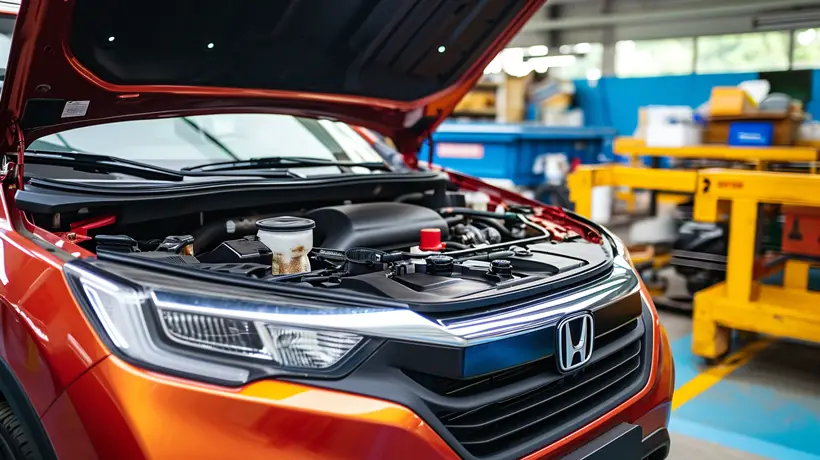
Faulty Ignition Switch
A worn or damaged ignition switch may not be providing the necessary electrical signal to start the engine. This can often be diagnosed by observing if the dashboard lights flicker or fail to illuminate when starting the engine.
Poor Ground Connection
An engine requires a solid ground connection to operate properly. Corroded or loose ground wires can add resistance, which impedes the flow of electricity and can result in slow cranking. It’s crucial to inspect and clean all ground connections.
Weak Fuel System
Though not directly linked to the electrical system, a weak fuel pump or clogged fuel filter can mean the engine doesn’t receive enough fuel, leading to longer cranking times before the engine starts. This weakness in the fuel system should be addressed to ensure timely starts.
Cold Weather Impact
Cold weather can significantly affect engine performance. Oil tends to thicken at lower temperatures, which increases resistance in the engine during start-up. Ensuring you’re using the correct type of oil for your climate can minimize this issue.
Timing Belt or Chain Problems
Issues with the timing belt or chain can also cause slow cranking as they may affect the engine’s ability to perform efficient rotations. If these components are worn or incorrectly tensioned, they might hinder the starting process.
It’s advisable to keep these potential causes in mind when addressing slow cranking issues with your car. Regular maintenance checks play a key role in identifying and resolving these kinds of problems before they escalate. By maintaining a comprehensive approach to engine care, we can ensure our vehicles remain dependable and ready to start as needed.
Tips for Maintaining a Healthy Battery and Starter
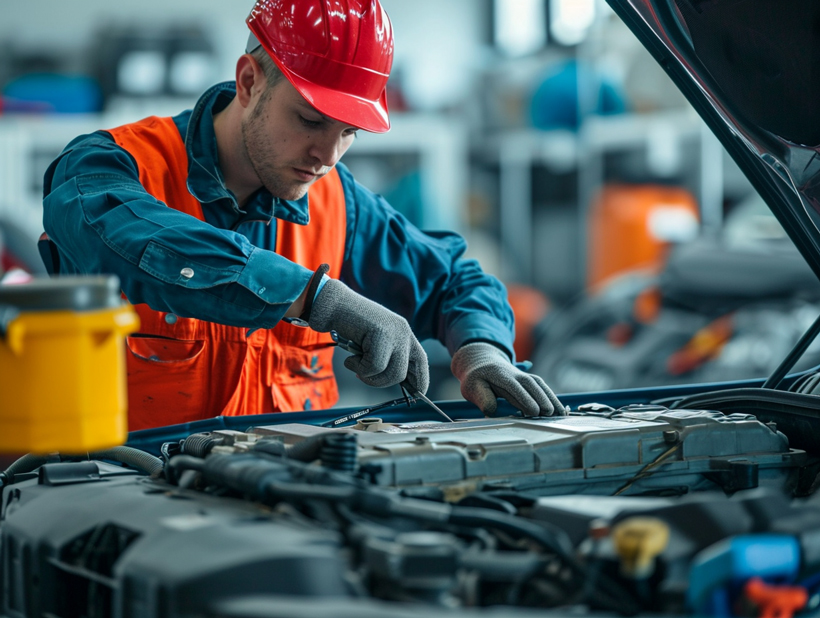
Ensuring our vehicle’s reliability involves routine maintenance of critical components such as the battery and the starter. Here’s our guide to keeping these components in tip-top shape:
- Regular Battery Inspection: Check the battery’s voltage with a multimeter at least twice a year to ensure it maintains the necessary charge. Look out for corrosion on the terminals and clean them as needed to prevent power loss.
- Proper Terminal Care: Apply anti-corrosion gel to the terminals. This will ward off rust and ensure a strong connection between the battery cables and terminals.
- Starter System Check: Have a professional inspect the starter system periodically. They can pinpoint issues such as worn-out parts or electrical problems that aren’t apparent to the untrained eye.
- Battery Replacement Timing: While batteries typically last 3-5 years, replacement shouldn’t wait until failure. Keep track of the age and replace it proactively when it nears the end of its expected lifespan.
- Temperature Management: Extreme temperatures can be harsh on batteries and starters. If possible, park in a garage to moderate temperature swings and shield these components from excessive cold or heat.
- Turn Off Accessories: Before starting the car, ensure that all energy-draining accessories like air conditioning, radio, and lights are off. This practice reduces strain on the battery and starter during ignition.
- Regular Vehicle Use: Letting a car sit idle for extended periods can sap the battery’s charge. Make it a point to drive regularly, even if it’s for short distances, to keep the battery charged.
Remember that swift attention to any starting difficulties can prevent more significant issues down the line. By integrating these maintenance habits into our routine, we’re investing in the longevity and dependability of our vehicle.
Conclusion
We’ve shared essential maintenance habits that can help prevent the stress of a car that cranks slowly, pointing to a low battery or starter issues. By integrating these practices into our regular routine, we’re investing in our vehicle’s longevity and reliability. Let’s not wait for a breakdown to remind us of the importance of vehicle care. Instead, let’s stay ahead with proactive maintenance and enjoy the peace of mind that comes with a well-maintained car. Remember, our vehicle’s health is in our hands, and taking these simple steps can save us time and money in the long run.
